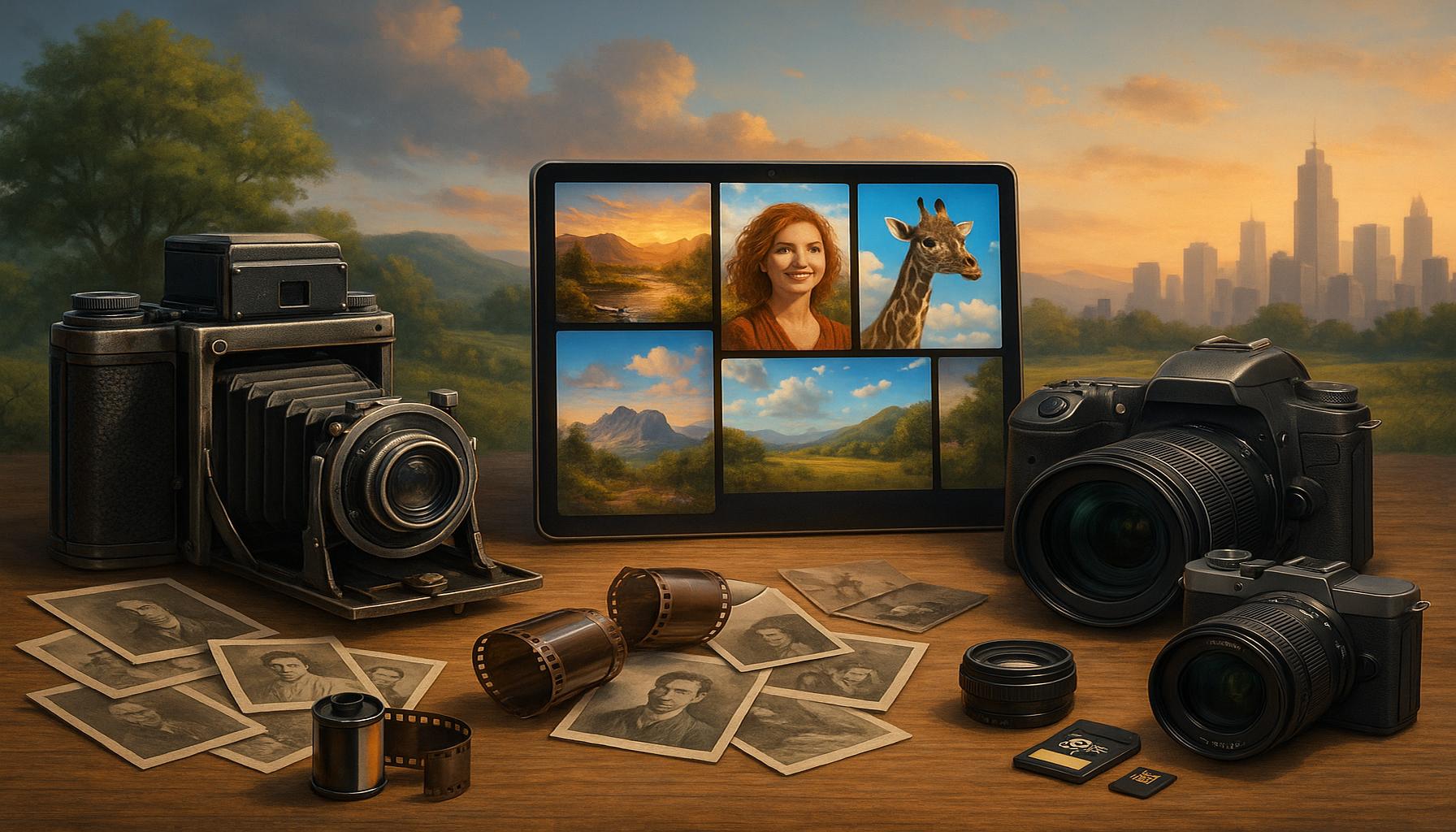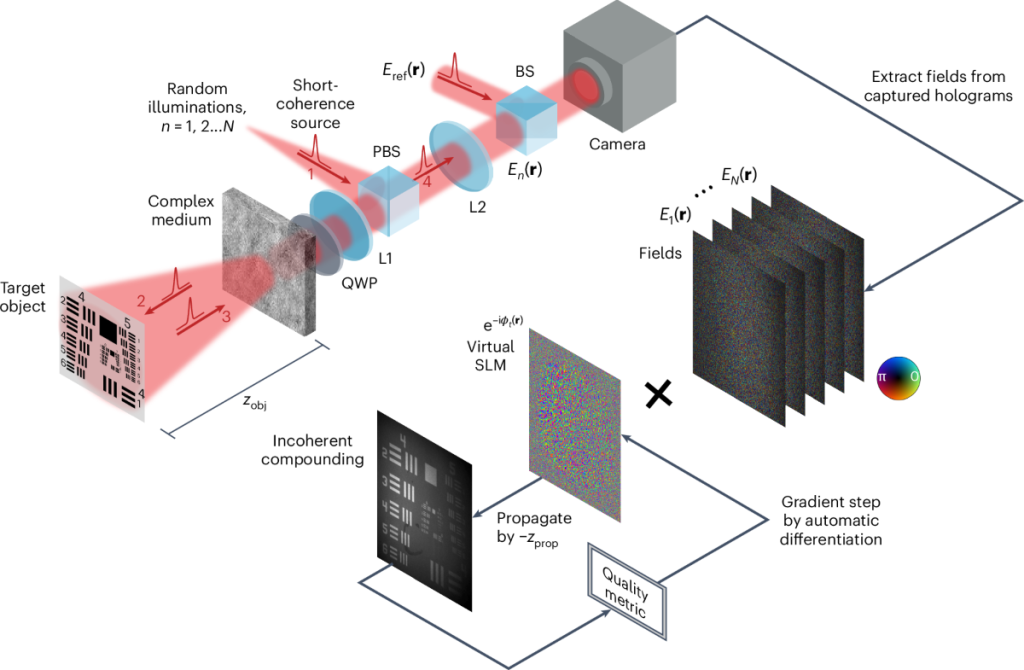The Evolution of Digital Photography: How Technology Transformed Our Perspectives

The Shift in Photography
The advent of digital photography has ushered in a new era, fundamentally altering how we document reality and express ourselves artistically. This transformation, which began in the late 20th century, has not only revolutionized technical processes but also influenced cultural trends and communication methods.
From Film to Pixels
The transition from traditional film to digital cameras represents one of the most significant developments in photography. Film photography demanded a nuanced understanding of exposure, composition, and the often tedious process of developing images in a darkroom. Photographers needed to invest time and money in film rolls and developing supplies. In contrast, digital cameras utilize electronic sensors that capture images in pixels, allowing for instantaneous feedback. This capability has opened the door for more spontaneous shooting, empowering amateur photographers to experiment without the fear of wasting expensive materials.
Accessibility for All
Today, nearly everyone owns a smartphone equipped with high-resolution cameras, making photography accessible to the masses. In the United States alone, over 80% of the population carries a smartphone, often enabling them to produce professional-grade photographs. This democratization of photography has led to an explosion of visual storytelling, with platforms like Instagram and Snapchat allowing users to share their experiences globally in real-time. Social media has transformed everyday moments into curated visual diaries, showcasing everything from family gatherings to breathtaking landscapes.
The Power of Editing
Alongside shooting capabilities, advances in editing software have revolutionized post-production. Programs like Adobe Photoshop and Lightroom have become essential tools for both novice and professional photographers. These applications allow users to enhance images, adjust lighting, and eliminate imperfections with a few clicks. The ability to manipulate images has not only expanded creative possibilities but has also stirred discussions on ethics and authenticity in photography. For example, the prevalence of image retouching raises questions about the representation of beauty and reality in today’s media.
As we traverse this evolving landscape, we begin to understand that photographs are no longer mere representations of moments; they are powerful communicative artifacts that shape our perceptions of the world around us. The evolution of digital photography prompts us to reconsider the value we place on visual art forms, highlighting their role in storytelling and personal expression.

Join us as we delve deeper into the pivotal milestones in digital photography, explore the contributions of influential figures, and examine the broader societal implications of this visual revolution. By understanding this evolution, we unlock a newfound appreciation for images and their significance in our lives.
DISCOVER MORE: Click here to dive deeper
A New Age of Visual Storytelling
The profound impact of digital photography transcends just technical improvements; it has fundamentally changed how we interpret and interact with images. This evolution is marked by several key advancements that have shaped the contemporary photography landscape, allowing us to explore, share, and communicate like never before.
Advancements in Camera Technology
The development of digital cameras has played a pivotal role in this transformation. Vintage film cameras, with their mechanical complications, required a level of expertise that often alienated casual users. The introduction of user-friendly digital cameras, equipped with automatic modes, has lowered the barrier to entry. Features such as optical image stabilization, autofocus technology, and built-in editing options have empowered users to capture high-quality images effortlessly. Furthermore, mirrorless cameras, which offer lighter and more compact designs, have increasingly become popular among enthusiastic and professional photographers.
- Instant View and Review: Modern digital cameras offer immediate feedback, enabling photographers to assess and adjust their shots on the spot.
- High Dynamic Range (HDR): This technology captures details in both bright and dark areas of an image, producing more vibrant and lifelike photographs.
- Connectivity Features: Many new models include Wi-Fi and Bluetooth capabilities, allowing for instant sharing on social media or cloud storage.
Changing Cultural Narratives
Alongside technological advancements, the cultural implications of digital photography are significant. Social media platforms are not just facilitators of sharing images, but also architectures of narrative creation. User-generated content dominates the digital landscape, shifting power away from traditional media. As millions post their photographs online, the lines between amateur and professional blur, creating an environment rich with diverse stories and experiences. This democratization of photography allows underrepresented voices to emerge, enriching our collective understanding of different cultures and perspectives.
This shift also encourages the exploration of previously overlooked subjects—inspiring movements centered around body positivity, socio-political commentary, and global social justice. By demanding visibility and promoting dialogue, digital photography has affirmed its place as a medium that significantly influences societal perceptions and encourages activism.
Future Potential and Ethical Considerations
As we embrace ongoing developments in digital photography, we must also grapple with the ethical challenges they present. Issues surrounding image authenticity, including the proliferation of deepfakes and digitally manipulated images, raise questions about trust in visual media. Can we rely on photographs to accurately represent reality? The growing concern about misinformation challenges both consumers and creators to navigate the fine line between artistic expression and deception.
The exploration of digital photography’s evolution reveals a multifaceted narrative, encompassing technology, accessibility, cultural implications, and ethical considerations. As we continue on this journey, the significance of images in shaping our world is undeniable. Understanding this evolution will not only deepen our appreciation for visual art but will also enhance our comprehension of its role in our daily lives and interactions.
As we delve deeper into “The Evolution of Digital Photography: How Technology Transformed Our Perspectives,” it becomes evident how remarkable advancements in digital imaging have reshaped not only the art of photography but also our daily lives and social interactions. The history of photography can be traced back to the early 19th century when the first permanent photograph was created through a lengthy, complex process. Fast forward to the late 20th century, the introduction of digital cameras revolutionized the medium. With the move from film to digital sensors, capturing images became simpler, more accessible, and significantly less expensive. The convenience offered by digital photography allowed more people to engage in photography as a hobby and profession.Moreover, the introduction of smartphones equipped with high-quality cameras has further democratized photography. Now, nearly everyone carries a camera in their pocket, leading to an explosion of shareable content on social media platforms. This shift has amplified our visual communication methods, allowing us to tell stories through images rather than words.Digital photography technology has also enhanced our understanding and appreciation of the world around us. With high dynamic range (HDR) imaging and high-definition video technology, photographers can capture nuances in light and texture that were previously unattainable. This not only elevates artistic expression but also helps in documenting crucial events and preserving cultural heritage.As we explore this fascinating evolution, it’s crucial to recognize that the advancements in digital photography push the boundaries of creativity and redefine our relationship with imagery. These changes force us to reconsider what constitutes a photograph and how images influence our perspectives on various issues. Let’s now take a closer look at some of the distinct advantages that this evolution has brought to the realm of digital photography.
DISCOVER MORE: Click here to learn about sustainable art crafting
Revolutionizing Accessibility and Engagement
One of the most significant transformations brought about by digital photography is its unprecedented accessibility. Historically, capturing high-quality images required not only expensive equipment but also intense training in photography techniques. Now, we find ourselves in an era where nearly everyone possesses a powerful camera in their pocket—our smartphones have made photography a ubiquitous form of self-expression. This shift has led to a remarkable increase in the volume of images produced each day, creating a global visual culture that is constantly evolving.
The Smartphone as a Game Changer
Modern smartphones come equipped with advanced camera features, including multiple lenses, enhanced low-light performance, and sophisticated software capabilities that enable users to create stunning photographs with ease. The rise of mobile photography—often referred to as “smartphoneography”—has democratized the art of capturing images. According to a report from Statista, over 1.4 billion smartphones with camera capabilities were shipped worldwide in 2021 alone, highlighting how integral they have become in our daily lives.
- Social Sharing: Platforms like Instagram, Snapchat, and TikTok have transformed photography into an instant sharing experience, fostering a new culture centered around visual storytelling and interaction.
- Photo Editing Apps: Applications such as Lightroom and Snapseed allow users to edit and enhance images on the go, granting them creative control and encouraging experimentation.
- Influencer Culture: The rise of social media influencers has turned photography into a lucrative career path, where visuals play a crucial role in marketing and brand identity.
The Role of Artificial Intelligence
Artificial intelligence (AI) is further enhancing the capabilities of digital photography. AI algorithms are now adept at automating processes such as image recognition, scene detection, and even editing suggestions. For instance, Google Photos uses machine learning techniques to organize and categorize images based on faces, locations, and objects, making it easier for users to find specific memories. Additionally, with AI-powered apps and programs, photographers can achieve results that would traditionally require hours of manual labor in mere seconds.
This integration of AI is not limited to post-processing; it also enriches the photography experience at the point of capture. Many modern cameras and smartphones utilize AI for auto-settings that adapt to the shooting environment, ensuring that even novice photographers can achieve professional-like results. This technological prowess opens doors for individuals who may have previously felt intimidated by photography, fostering a wider appreciation for the craft.
The Challenge of Over-Saturation
While the digital photography craze empowers individuals, it also poses challenges. As the number of images shared online skyrockets, the issue of visual over-saturation emerges, leading to a phenomenon where authenticity struggles to stand out. The endless stream of images can desensitize audiences, making it increasingly difficult for individual stories to gain traction. This saturation forces creators to think innovatively to capture attention, often resulting in the use of extreme aesthetics or sensationalism.
Furthermore, consumption patterns shift as viewers move from appreciating singular images to engaging with curated collections and stories. To navigate this landscape, photographers must hone their unique artistic voices while navigating the realm of algorithms and trends, ensuring that their work transcends mere visibility and resonates on a deeper level.
Digital photography’s evolution has fostered a rich tapestry of creativity and communication. As it continually adapts to technological innovations and shifts in cultural values, it holds the power to redefine not only how we capture moments but also how we understand and connect as a global community.
DISCOVER MORE: Click here to dive into urban street photography
Conclusion: A New Lens on Creativity and Connection
In summary, the evolution of digital photography represents a profound shift in not only how we capture images but also how we understand the world around us. With the advent of smartphone technology, photography has become an act of immediate expression accessible to all, generating a vast array of visuals that reflect our collective experiences. The integration of artificial intelligence into photography further enhances this medium, allowing both amateurs and professionals to create high-quality images with unprecedented ease.
However, as we celebrate these advancements, we must also acknowledge the challenges posed by the digital landscape. The phenomenon of visual over-saturation demands that photographers innovate and find unique ways to stand out among a sea of images. Balancing creativity with the evolving expectations of audiences becomes crucial in a world where the sheer volume of content can often overshadow authenticity.
As technology continues to evolve, the opportunities for storytelling through photography are limitless. From the rise of visual social platforms to the cultivation of personal narrative through curated portfolios, photography has transformed the way we connect on a global scale. By embracing both the power and the challenges of this art form, individuals can shape a more enriching visual culture that celebrates diversity, emotion, and human experience. Ultimately, digital photography not only mirrors our technological advancements but also redefines our perspectives, offering a lens through which to view our shared humanity.


